We check in practice the meaninglessness of high sampling rates
A lot of things are written about the uselessness of the sampling rate of 192,000 Hz in sound files intended for listening. But arguments usually refer to theorems, for the correct understanding of which you need to understand mathematics fairly well. But there is another way to check some of the statements - to conduct the relevant experiments many times.
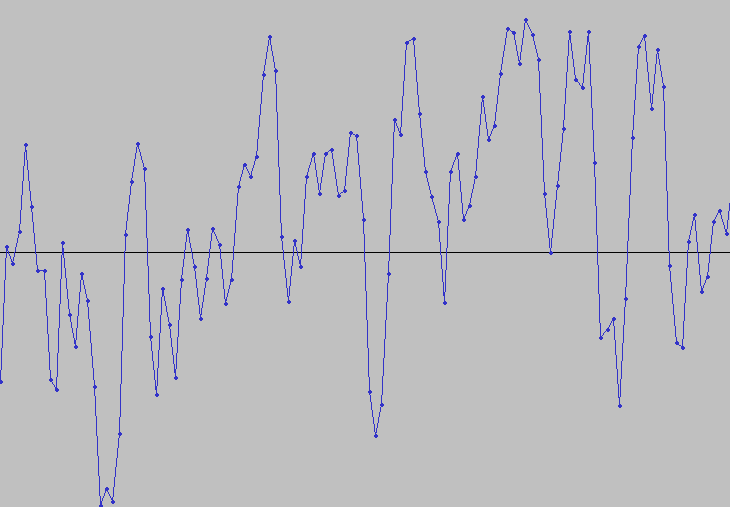
First you need to formulate a statement that will be checked in the future. If the frequency of 192,000 Hz is excessive, then there should be a lower sampling rate at which the correct restoration of the audio signal occurs. Suppose this is a frequency of 44,100 Hz. If correct recovery occurs at 192,000 Hz, and correct recovery occurs at 44,100 Hz, in both cases the result at the output should be the same. To test this in practice, you need expensive equipment, which is far from everyone. So let's go a little different way. If the files of 44100 Hz and 192000 Hz contain the same amount of information about the sound, this means that the conversion from 192000 Hz to 44100 Hz is lossless compression, therefore, there must be a way to restore from the 44100 Hz file the original file 192000 Hz. This is what everyone can check on any modern computer.
')
As a source, I chose a piece of music with a sampling frequency of 192,000 Hz. If I got some wrong material, in which there was initially nothing important that should be lost when converting from 192,000 Hz to 44,100 Hz, then anyone can do the things described in this article with any other file. All actions will be performed in the free Audacity editor with standard effects. All files received in the process will be saved in FLAC format with a bit depth of 24 bits.
The source file is stored in the “A.FLAC” file and looks like this:

And here is its spectrum:
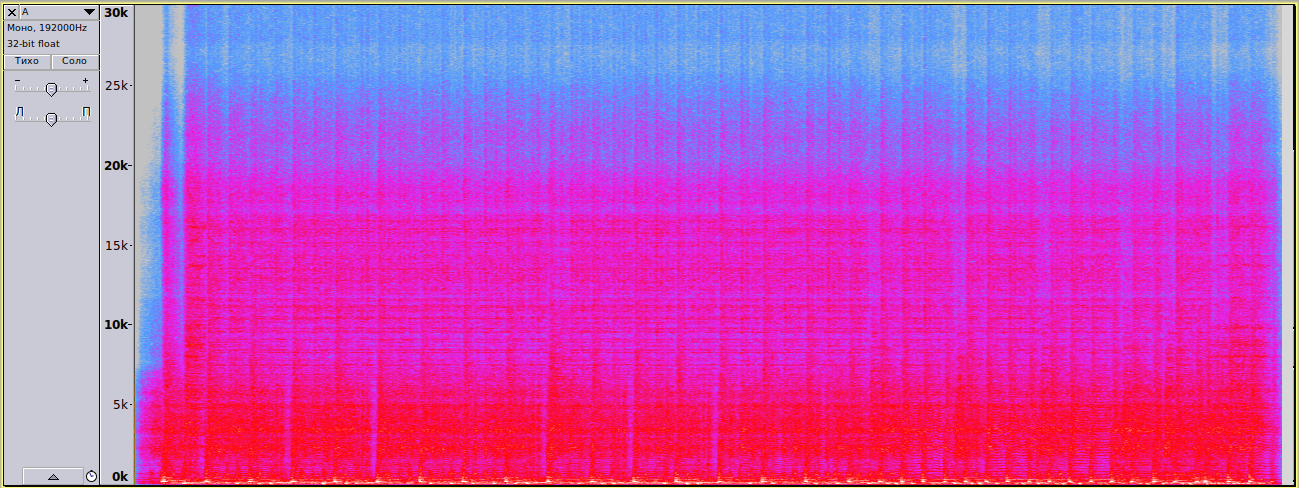
We are only interested in sound information, so we will remove ultrasound with the help of an equalizer.

And we get the following spectrum:

We export the result to the “B.FLAC” file - it is with it that we will compare the file that is obtained at the end of all transformations.
Before converting the sampling frequency, make sure that the settings are set to the maximum quality:
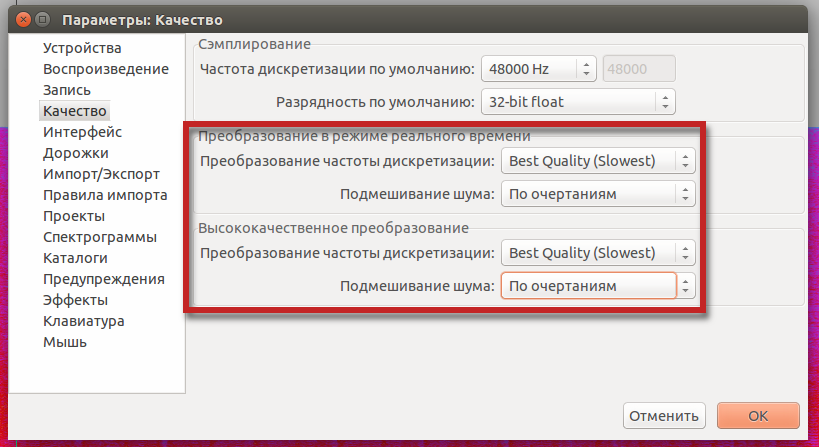
Next, select a new project sample rate and export it to the “C.FLAC” file.

Then open the “C.FLAC” file, set the project sampling rate to 192,000 Hz and export it to the “D.FLAC” file.
And the most important stage remained: open the “B.FLAC”, “D.FLAC” files and compare them:

Let's take a closer look:
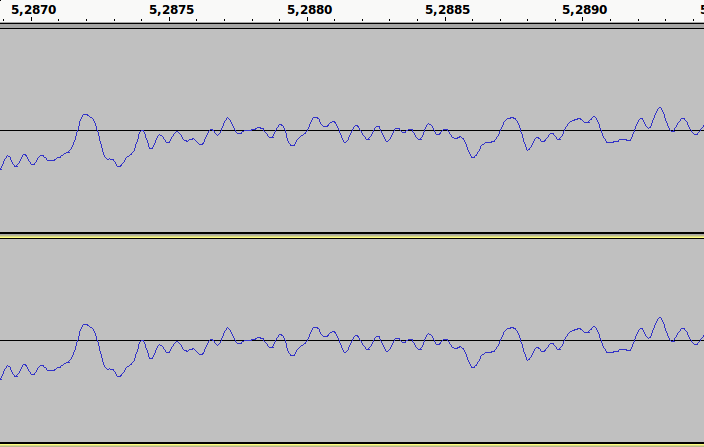
No difference. Compare better - we invert one of the tracks

And put it all in one track:

Silence! Complete silence!
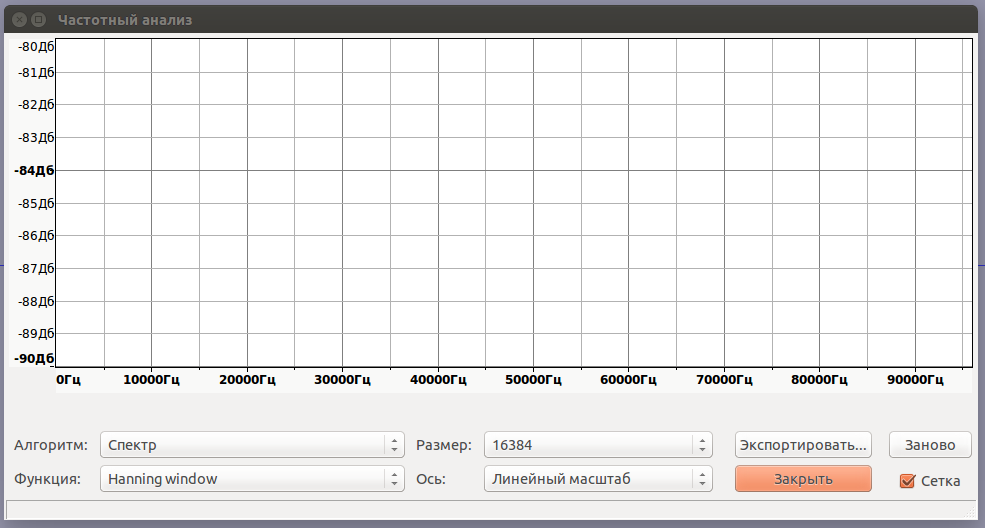
And in order to still see the difference, it is necessary to increase the amplitude by 96 dB!
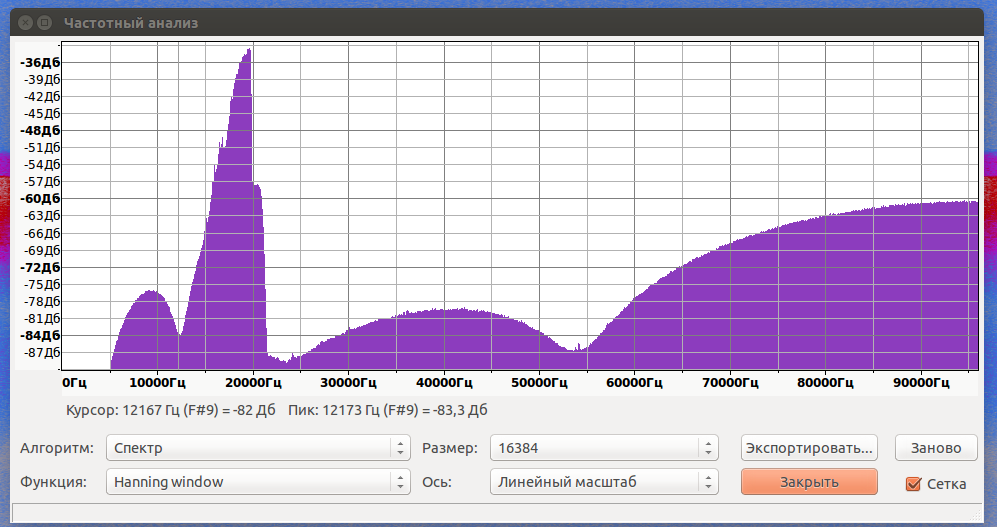
The difference is so quiet that it is impossible to hear, which means that when converting from 192000 Hz to 44100 Hz in the audio range, information is not lost. This is how, without deep knowledge of mathematics, using the software available to each one, you can check the adequacy of the sample rate of 44,100 Hz for storing music files.

First you need to formulate a statement that will be checked in the future. If the frequency of 192,000 Hz is excessive, then there should be a lower sampling rate at which the correct restoration of the audio signal occurs. Suppose this is a frequency of 44,100 Hz. If correct recovery occurs at 192,000 Hz, and correct recovery occurs at 44,100 Hz, in both cases the result at the output should be the same. To test this in practice, you need expensive equipment, which is far from everyone. So let's go a little different way. If the files of 44100 Hz and 192000 Hz contain the same amount of information about the sound, this means that the conversion from 192000 Hz to 44100 Hz is lossless compression, therefore, there must be a way to restore from the 44100 Hz file the original file 192000 Hz. This is what everyone can check on any modern computer.
')
As a source, I chose a piece of music with a sampling frequency of 192,000 Hz. If I got some wrong material, in which there was initially nothing important that should be lost when converting from 192,000 Hz to 44,100 Hz, then anyone can do the things described in this article with any other file. All actions will be performed in the free Audacity editor with standard effects. All files received in the process will be saved in FLAC format with a bit depth of 24 bits.
The source file is stored in the “A.FLAC” file and looks like this:

And here is its spectrum:

We are only interested in sound information, so we will remove ultrasound with the help of an equalizer.

And we get the following spectrum:

We export the result to the “B.FLAC” file - it is with it that we will compare the file that is obtained at the end of all transformations.
Before converting the sampling frequency, make sure that the settings are set to the maximum quality:

Next, select a new project sample rate and export it to the “C.FLAC” file.

Then open the “C.FLAC” file, set the project sampling rate to 192,000 Hz and export it to the “D.FLAC” file.
And the most important stage remained: open the “B.FLAC”, “D.FLAC” files and compare them:

Let's take a closer look:

No difference. Compare better - we invert one of the tracks

And put it all in one track:

Silence! Complete silence!

And in order to still see the difference, it is necessary to increase the amplitude by 96 dB!

The difference is so quiet that it is impossible to hear, which means that when converting from 192000 Hz to 44100 Hz in the audio range, information is not lost. This is how, without deep knowledge of mathematics, using the software available to each one, you can check the adequacy of the sample rate of 44,100 Hz for storing music files.
Source: https://habr.com/ru/post/377111/
All Articles